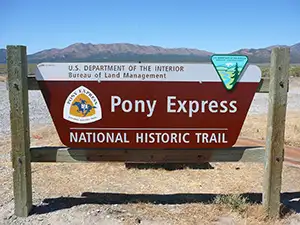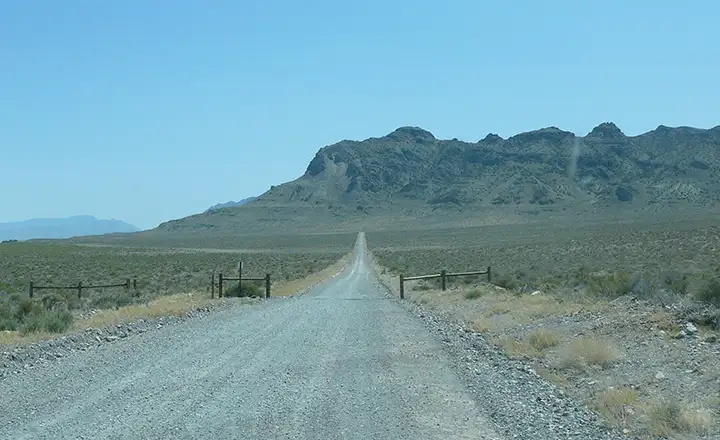Pony Express National Historic Trail

A typical view in many areas of the Pony Express National Historic Trail

Over the years, the Pony Express has been a much fantasized, very blown-out-of-proportion story from the American West. The romantic image that so many folks have of that lone rider galloping across the western plains and deserts, leaping off one horse and straight onto another with the mail saddlebags in hand... well, it hints at reality... and the reality is sometimes the stuff legends are made from. But the reality behind the Pony Express fantasy begins with the story of a Federal Government desperate to communicate with citizens on the other side of the continent, and citizens in California desperate to hear from folks back home in the East. Also central to the story is the Central Overland California & Pikes Peak Express Company (the real name of the Pony Express), a venture put together by three partners in a failing freight company, desperate for government subsidies to try to turn their economic fortunes around.
From the day Russell, Majors & Waddell signed the contract with the feds to put together the Pony Express, they had 67 days to get it up and running. The route had not been planned yet, way stations had not been built, men not hired, horses not bought... It was a rush job that they somehow got done on time. However, the government funding promised from the start was always a problem and that contributed significantly to the downfall of the enterprise.

Traveling the Pony Express National Historic Trail across western Utah
The plan was to build a "home station: every 75 to 100 miles where riders and horses would be housed. In between, there were relay stations every 10 to 15 miles were horses were kept so that riders could swap for fresh horses and keep moving quickly.
The first westbound rider left St. Joseph, Missouri in the evening of April 3, 1860. The first eastbound rider rode a paddleboat steamer from San Francisco to Sacramento that same afternoon, then got on a horse and headed into the Sierra Nevada Mountains. That first run had 86 relay and home stations in place along a trail that went from St. Joseph, Missouri to Fort Kearny, Nebraska, to Fort Laramie then Fort Bridger in Wyoming, then over the mountains to Salt Lake City, then west across the desert to Roberts Creek Station (north of present-day Eureka), then across the central Nevada desert to the Sierras and down to Sacramento and San Francisco. By the time of the last run of the Pony Express (completed on November 20, 1861) there were 147 stations in place.

A trail marker at a former Pony Express relay station in western Utah
While the stories of the riders and the hardships they faced have become the central themes of many novels, movies and television shows, the financial and political realities of the Pony Express have been somewhat ignored: weather, Indian problems and political shenanigans all contributed to the quick demise of the venture. That and the completion of the transcontinental telegraph line on October 26, 1861.
Today, large portions of the old route are still available to the public. A couple sections of the route are now designated scenic byways in Utah and Nevada. Since 1978, the National Pony Express Association has run a regular event where up to 500 riders at a time have ridden the original route (as best they can) in a non-stop, 10-day race, only they now keep track of each other with cell phones. And there's no "Indian problems" these days...
Photos courtesy of the Bureau of Land Management
Maps courtesy of the National Park Service and Bureau of Land Management